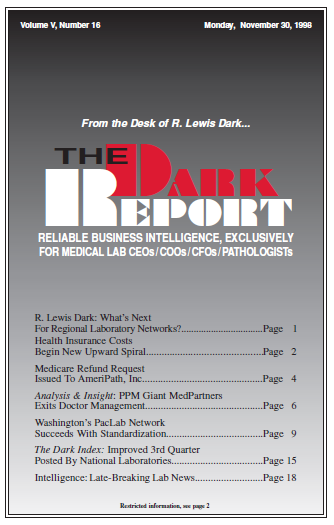ARIZONA For pathologists interested in preserving and enhancing their income, THE DARK REPORT’S Private Pathologist Income Symposium was just the item. Held in Scottsdale on November 13-14, it attracted a sell-out crowd of pathologists and practice administrators. Interest in the symposium was so strong that registrations sold out two weeks before the event. MORE ON:…PATHOLOGIST …
“November 30, 1998 Intelligence: Late Breaking Lab News” Read More »
To access this post, you must purchase The Dark Report.


